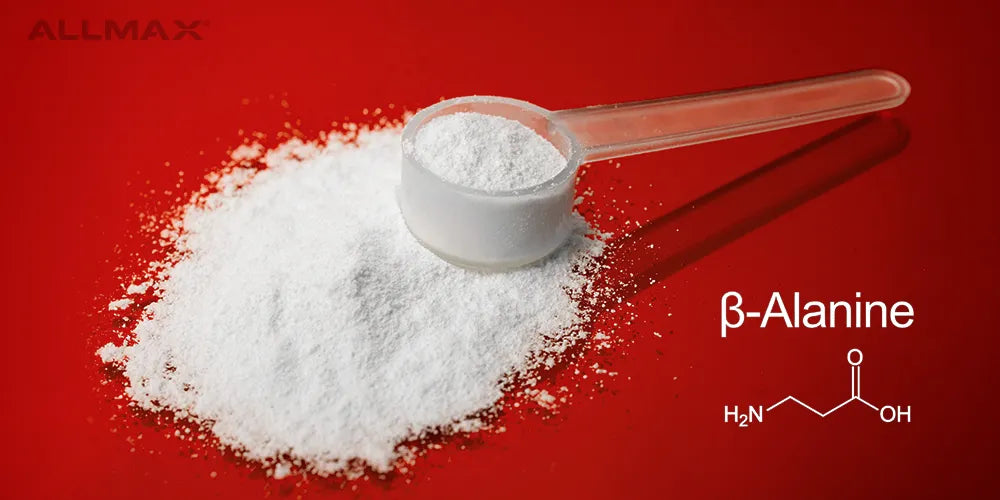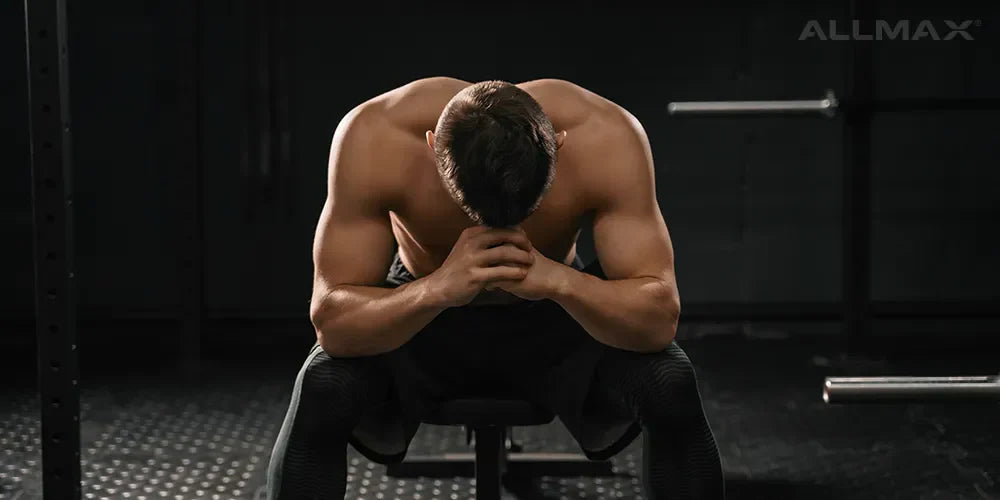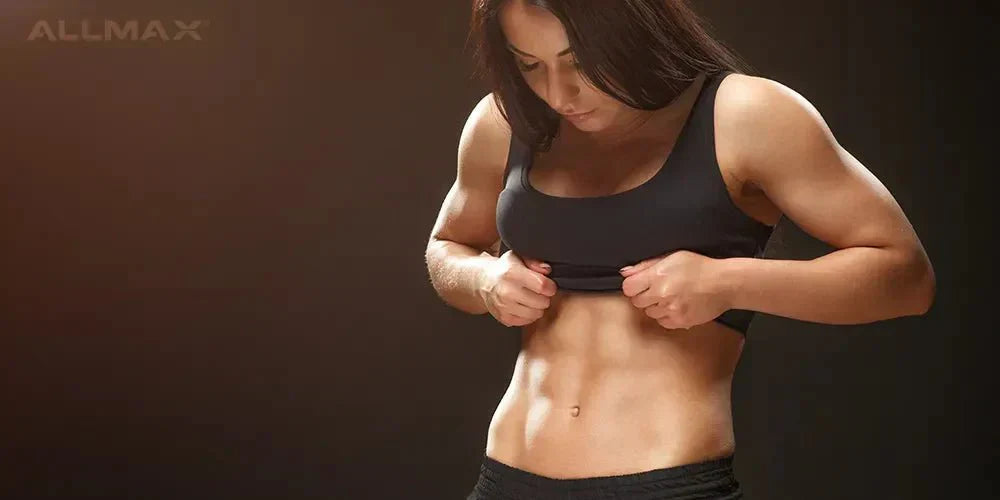During the 15 years in which I have helped hundreds of personal training clients reach their full bodybuilding potential, I have observed one immutable truth that will save you many hours of wasted effort in the gym: by designing your workouts around the best compound exercises or multi-joint exercises, and incorporating isolation workout exercises sparingly you may not only build a better physique faster,
"BUT OVER THE LONGER TERM, YOU MAY ALSO HAVE MORE ENERGY TO DEVOTE TO BASIC TRIED AND TESTED TRAINING"
Over the long term, this approach also provides more energy to devote to basic, tried-and-tested training protocols that really work – namely, hard training that allows for ample recovery time. By selecting, on average, two compound movement exercises and one isolation exercise for each major muscle group per workout, and going all out in the execution of each, session times can be reduced from over one and a half hours to less than 45 minutes.
This truly is an old-school approach. By prioritizing the basics in straight sets, linear periodization style, and avoiding over-complicating one's training through the liberal incorporation of intensity methods and excessive isolation exercises, real gains can be made, fast.
Compound Movements Workout

What are compound exercises?
A compound movement can be defined as:
- Any exercise that engages two or more different joints
- Fully stimulates entire muscle groups and, indeed, multiple muscles
A major benefit of using compound, or multi-joint, lifts is the systemic stress they exert throughout the target muscles and neighboring areas. In the case of squats and deadlifts, the whole body is forced to work systemically, producing a total-body effect. When systemic stress is low, our muscles fail to benefit from a hormonal cascade (GH and testosterone) conducive to enhanced protein synthesis and greater muscular growth.
Another reason for emphasizing compound exercises over isolation (single-joint) exercises is the former's ability to work more muscle overall, thereby eliminating the need to include excessive isolation work. This saves time and maximizes efficiency in the gym. More major muscle groups can be hit with a smaller number of exercises.
While many gym-goers tend to prioritize isolation work over mass-building functional movements (for example, front raises, bent laterals, and side laterals may take precedence over overhead presses and incline presses), smart trainees favor compound movements to save time, stimulate more muscle fibers, and enhance recovery.
What is a good list of compound exercises for bodybuilding? For example, front raises, bent laterals and side laterals may take precedence over overhead presses and incline presses), the smart one's favor compound lifts to save time, stimulate more muscle fibers and enhance recovery.
Benefits of Compound Movements

It's no secret that powerlifters, weightlifters, and CrossFit devotees are some of the strongest people on earth. These athletes all include basic, compound movements as a key to their success. We can't expect to gain any real size without substantially loading our target muscles.
Biomechanical Advantages and Maximal Stimulation
Given the biomechanical advantages they confer, multi-joint exercises allow more leverage to be generated. With more muscles recruited and activated, greater stability provides the structural support needed to produce greater muscular force. Compound lifting allows more weight to be shifted, meaning maximal stimulus of the muscles under tension can occur.
Real-World Strength and Functional Benefits
Compound movements, with their emphasis on pushing, pulling, squatting, pressing, and lifting, more closely resemble how our muscles function in real life. As such, they more effectively help us produce practical, useful strength, which we can then use to complete daily tasks with greater efficiency and compete in sports requiring a solid strength foundation and an ability to coordinate multiple muscle groups simultaneously.
Metabolic Boost and Overall Health
Because the big lifts require an abundance of energy to complete and leave us feeling exhausted and depleted, our heart is forced to work harder than when executing isolation movements, and our metabolic rate is significantly elevated. Thus, our cardiorespiratory systems and fat-burning machinery are beneficially altered to promote overall health gains and a lean, muscular physique.
COMPOUND LIFTING ALLOW MORE WEIGHT TO BE SHIFTED, MEANING MAXIMAL STIMULUS OF THE MUSCLES UNDER TENSION CAN OCCUR.
The King of Bodybuilding Exercises
While isolation movements certainly have their place in any good weight training regime (they allow us to target individual muscles and accentuate specific areas of our physique), bodybuilding compound exercises are clearly king. In the following section, we'll overview the five best compound bodybuilding exercises needed to cloak your physique in thick layers of muscle and provide a training plan, complete with workout protocols, to save you time while kick-starting the growth process (additional, effective, multi-joint basics will also be included).

5 Best Compound Exercises for Bodybuilding You Should Add to Your Workout Routine
Now that you understand the immense benefits of compound movements for building muscle, strength, and overall functional fitness, it's time to put that knowledge into action. While many exercises qualify as compound lifts, some stand out as foundational for serious bodybuilding gains.
Here are the five best compound exercises that will form the cornerstone of an effective, time-saving, and mass-building workout routine. Incorporating these into your program will maximize your potential for a strong, muscular physique.
Bodybuilding Compound Exercise#5: Dips
The humble dip is one of the oldest and most effective compound movements. It's responsible for building more chest, shoulders, and triceps mass than probably any other compound lift, making it an often-overlooked weapon in the fight for densely muscled upper-body mass. As a bonus, the dip forces you to work hard against significant resistance, using both your bodyweight and any added weight.
This exercise is incredibly versatile, allowing you to target specific muscle groups with slight adjustments to your form.
How to Perform:
- Stand on a dip station with your hands gripping the parallel bars.
- Lift your feet off the ground, supporting your entire body weight with your arms.
- Slowly lower your body by bending your elbows until your shoulders are below your elbows (or as deep as your flexibility allows).
- Push back up to the starting position, extending your arms.
Muscles Worked:
- Chest: Primarily the lower and outer chest.
- Shoulders: Anterior deltoids.
- Triceps: All three heads of the triceps.
Proper Form & Tips:
-
For Triceps Emphasis:
- Keep your upper body upright.
- Tuck your elbows close to your body.
- Flex your triceps at the top of the movement.
-
For Chest Emphasis:
- Lean your upper body forward.
- Flare your elbows out from your sides.
- Squeeze your pecs at the top of the movement.
- Maintain a controlled pace throughout the exercise, especially on the lowering (negative) phase.
- If bodyweight is too easy, add resistance using a dip belt or by holding a dumbbell between your feet.
- If bodyweight is too difficult, use an assisted dip machine or a resistance band.
Watch Out For:
- Going too deep: This can place excessive stress on your shoulders. Only go as deep as your shoulder mobility allows comfortably.
- Shrugging your shoulders: Keep your shoulders down and back, away from your ears, to properly engage the target muscles and protect your neck.
Using momentum: Avoid bouncing at the bottom or using jerky movements to push yourself up. The movement should be smooth and controlled.
Bodybuilding Compound Exercise #4: Reverse Grip Bent-Over Barbell Rows
Like all effective compound movements, the reverse grip barbell row (a favorite of six-time Olympia champ Dorian Yates) creates tension through the entire body – a coveted systemic effect – to build a complete, massive look. Because it's a difficult multi-joint lift to perform correctly, this movement is often passed over in favor of easier seated rows and lat pulldowns. However, for a thick, massive back – from traps to lower lats – and full biceps development, it cannot be ignored.
How to Perform:
- Stand with your feet shoulder-width apart, knees slightly bent, and grasp a barbell with an underhand (reverse) grip, hands slightly wider than shoulder-width.
- Hinge forward at your hips, keeping your back straight and nearly parallel to the floor. Let the bar hang directly below your shoulders.
- Pull the barbell up towards your lower abdomen, squeezing your shoulder blades together at the top of the movement.
- Slowly lower the bar back to the starting position with control.
Muscles Worked:
- Back: Lats (latissimus dorsi), rhomboids, traps (trapezius), erector spinae (lower back).
- Biceps: Secondary involvement.
- Forearms: Grip strength.
Proper Form & Tips:
- Maintain a straight back throughout the entire movement; avoid rounding your spine.
- Keep your core tight to stabilize your torso.
- Focus on pulling with your back muscles, not just your arms. Imagine driving your elbows towards the ceiling.
- Control both the pulling and lowering phases; don't let gravity do the work on the way down.
- If you struggle with maintaining back posture, start with lighter weight or perform the exercise with one hand supported on a bench.
Watch Out For:
- Rounding your lower back: This puts immense strain on your spine. Keep your back flat or with a slight natural arch.
- Using excessive momentum: Avoid "jerking" the weight up. The movement should be controlled by your muscles.
- Standing too upright: This reduces the effectiveness of the exercise on your back muscles. Maintain a strong hinge at the hips.
Bodybuilding Compound Exercise #3: Bench Press
Often referred to as the king of upper body movements, or the upper body squat, the bench press builds muscle in the chest, shoulders, triceps, and even the back, promoting more upper body mass gains than probably any other exercise. The key to fully benefiting from this pure power movement is to emphasize the negative, or lowering, phase; completely stretch as many muscle fibers as you can on the descent, in a slow, controlled manner. While all movements should be controlled from top to bottom, many have a tendency to "drop" the bar when benching. Though such form may help us push out more reps, in doing so we effectively negate half of the rep and seriously compromise our mass-building gains.
How to Perform:
- Lie on a flat bench with your eyes directly under the barbell.
- Grasp the bar with an overhand grip, slightly wider than shoulder-width, so your forearms are perpendicular to the floor at the bottom of the movement.
- Unrack the bar and hold it directly over your chest with arms fully extended.
- Slowly lower the bar towards your mid-chest, maintaining control, until it lightly touches your chest (or is very close).
- Powerfully push the bar back up to the starting position, extending your arms fully.
Muscles Worked:
- Chest: Pectoralis major (all heads, but particularly the sternal head).
- Shoulders: Anterior deltoids.
- Triceps: All three heads of the triceps.
- Back (stabilizers): Rhomboids, lats (for stability).
Proper Form & Tips:
- Emphasize the negative: Control the descent of the bar; don't let it just drop. This maximizes muscle fiber recruitment.
- Keep your feet flat on the floor for stability and to generate leg drive.
- Maintain a slight arch in your lower back, keeping your shoulder blades squeezed together and pressed into the bench. This provides a stable base and protects your shoulders.
- Focus on driving the bar up by pushing through your chest, triceps, and shoulders simultaneously.
- Use a spotter, especially when lifting heavy weights.
Watch Out For:
- Bouncing the bar off your chest: This is dangerous and negates the muscular work.
- Flaring your elbows too wide: Keep your elbows slightly tucked (around a 45-degree angle to your torso) to protect your shoulders.
- Lifting your hips off the bench: This indicates you're using too much weight or improper form.
- Not achieving full range of motion: Make sure to bring the bar down close to your chest and fully extend your arms at the top.
Bodybuilding Compound Exercise #2: Deadlift
The many benefits of prioritizing the deadlift in your back/traps workout routine make this movement a mandatory lift for anyone wanting complete thickness through their entire physique, not just their lower body. Worthy of a lengthy article of its own, the deadlift works the lats, spinal erectors, traps, inner back, hamstrings, quads, calves, chest, and arms – virtually all muscle groups. Suffice to say, this multi-joint lift, because of the demands it places on multiple muscles, is an extremely valuable way to develop functional muscle strength along with a densely muscled physique.
How to Perform:
- Stand with your mid-foot under the barbell.
- Bend at your knees and hips to grasp the bar with a shoulder-width, overhand or mixed grip.
- Keep your back straight, chest up, and shoulders slightly behind the bar.
- Take a deep breath, brace your core, and lift the weight by extending your hips and knees simultaneously. Keep the bar close to your body.
- Stand tall at the top, squeezing your glutes, but do not hyperextend your back.
- Lower the bar with control by reversing the motion, hinging at your hips first, then bending your knees.
Muscles Worked:
- Back: Lats, traps, erector spinae (lower back).
- Legs: Hamstrings, glutes, quadriceps, calves.
- Forearms: Grip strength.
- Shoulders: Deltoids (stabilization).
- Core: Abdominals, obliques (stabilization).
Proper Form & Tips:
- Maintain a flat or slightly arched lower back throughout the entire lift.
- Keep the barbell as close to your body as possible during both the ascent and descent.
- Focus on driving through your heels and using your hips and glutes to lift the weight.
- Your hips and shoulders should rise at the same rate.
- Use chalk for better grip if needed, especially with heavier weights.
- Deload the weight by gently placing it on the floor between reps, rather than bouncing.
Watch Out For:
- Rounding your back: This is the most common and dangerous mistake, leading to severe spinal injuries.
- Squatting the weight up: Don't let your hips drop too low, turning it into a squat. It's a hip-dominant movement.
- Hyperextending your back at the top: Standing too tall and leaning back excessively can injure your lower back.
- Losing control on the descent: Lowering the weight should be controlled, not a free fall.
- Bar drifting away from your body: This increases leverage and strain on your back.
Bodybuilding Compound Exercise #1: Barbell (Back) Squat
Though the deadlift could easily switch places with the barbell back squat in the battle for top compound exercises supremacy, the squat (done conventional style) is a personal favorite for several reasons. It maximally works our strongest muscle groupings (the quads and glutes) to establish a strong foundation of support to facilitate the development of the entire physique. Through its unsurpassed ability to target core development, the squat enables us to become stronger on all upper body movements which require core stabilization. The squat is also arguably the most systemic of all compound lifts: the force needed to squat heavy weights places tremendous pressure on our lower back spinal erector muscles, upper back, waist, even the arms, chest, and shoulders. Also, the metabolic and cardiorespiratory benefits resulting from heavy squats cannot be replicated with any other movement. Whatever your training goal, the squat, if performed correctly, will be a major component in your success.
Note: The military press is a great way to build muscle mass, involve multiple joints for heavier weights, and increase body strength when used for strength training.
How to Perform:
- Step under a barbell in a squat rack, placing it across your upper back and shoulders (below your neck).
- Grip the bar with an overhand grip, slightly wider than your shoulders, and unrack the weight.
- Step back, positioning your feet roughly shoulder-width apart, toes pointed slightly out.
- Take a deep breath, brace your core, and initiate the movement by hinging at your hips and bending your knees simultaneously.
- Lower yourself as if sitting into a chair, keeping your chest up and back straight. Go as deep as your mobility allows, ideally until your hips are below your knees (parallel or deeper).
- Drive back up by pushing through your heels, extending your hips and knees to return to the starting position.
Muscles Worked:
- Legs: Quadriceps, hamstrings, glutes, calves.
- Core: Abdominals, obliques, erector spinae (lower back).
- Upper Back: Traps, rhomboids (stabilization).
- Shoulders: Deltoids (stabilization).
Proper Form & Tips:
- Maintain a neutral spine (straight back) throughout the entire movement.
- Keep your chest up and shoulders back.
- Push your knees out in line with your toes; don't let them cave inwards.
- Focus on driving through your heels on the way up.
- Go for full depth (hips below knees) if your mobility allows, as this maximizes muscle activation.
- Practice with just the bar or light weights to master the form before adding significant load.
Watch Out For:
- Rounding your lower back ("butt wink"): This puts significant shear stress on your spine. Ensure you maintain a neutral spine.
- Knees caving inwards: This can lead to knee pain and injury. Actively push your knees out.
- Lifting your heels: Keep your entire foot flat on the floor to maintain balance and power.
- Not going deep enough: Partial squats limit the range of motion and muscle activation.
- Excessive forward lean: While some lean is natural, don't let your chest drop excessively, as this shifts too much load to your lower back.




1 comment
Dean
Great movements but the dip has always been my favorite in the gym I’m 60 and still use them .
Great movements but the dip has always been my favorite in the gym I’m 60 and still use them .